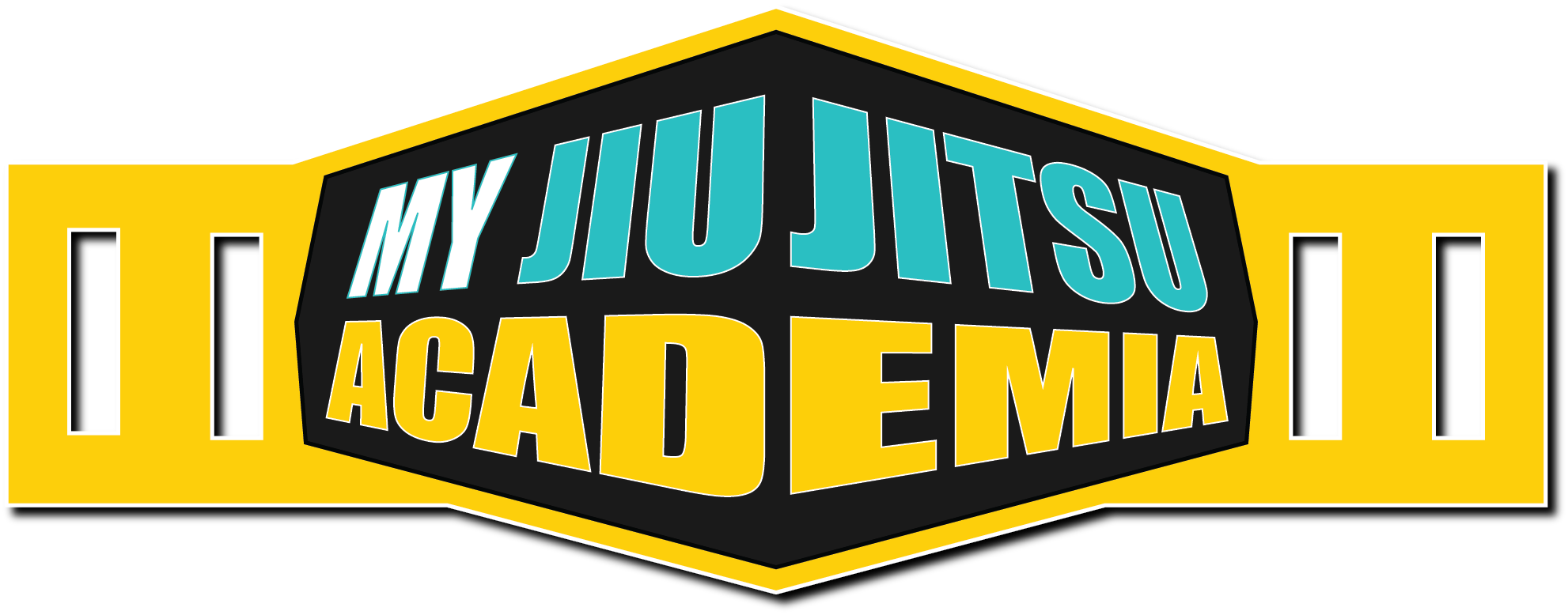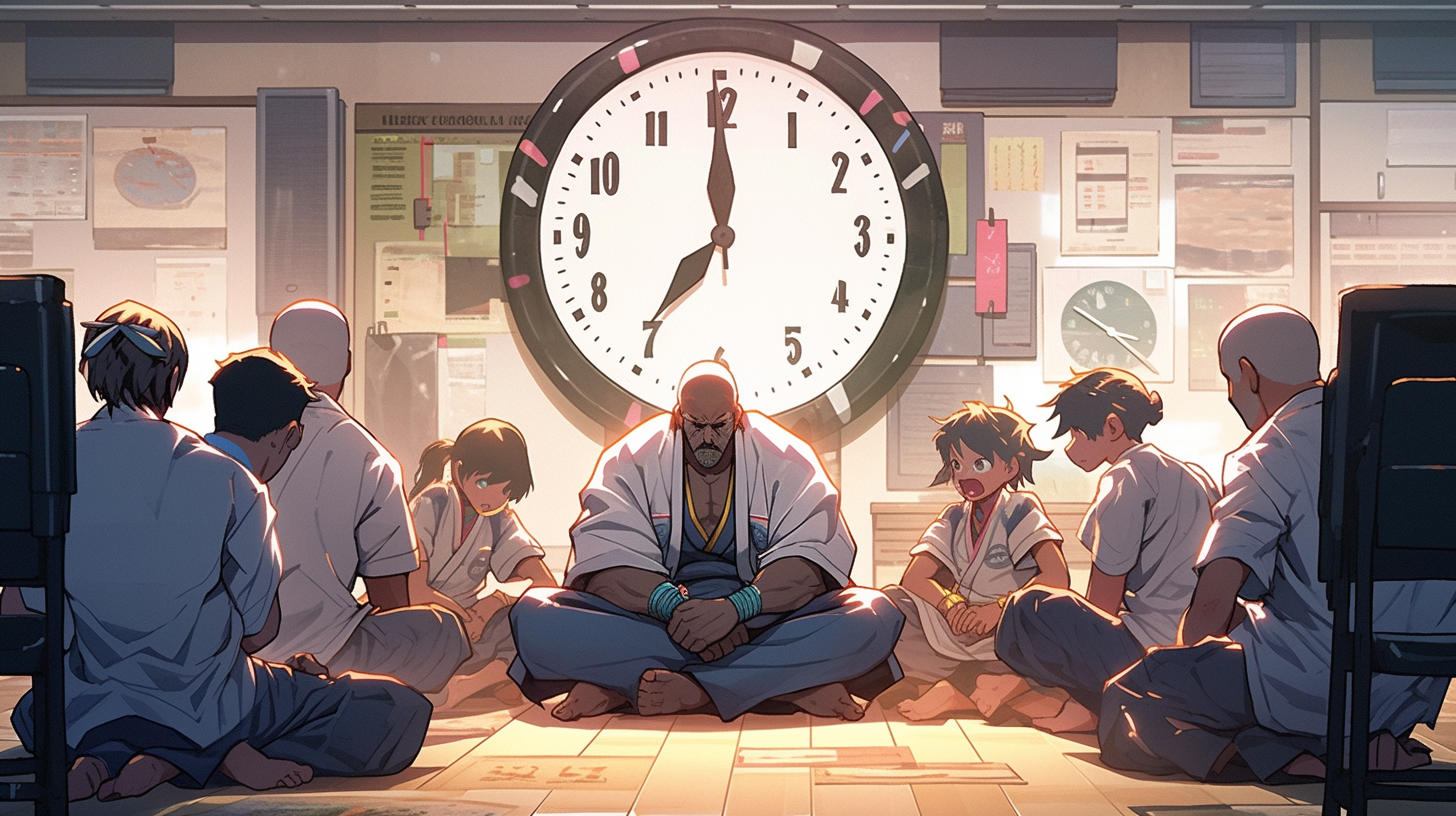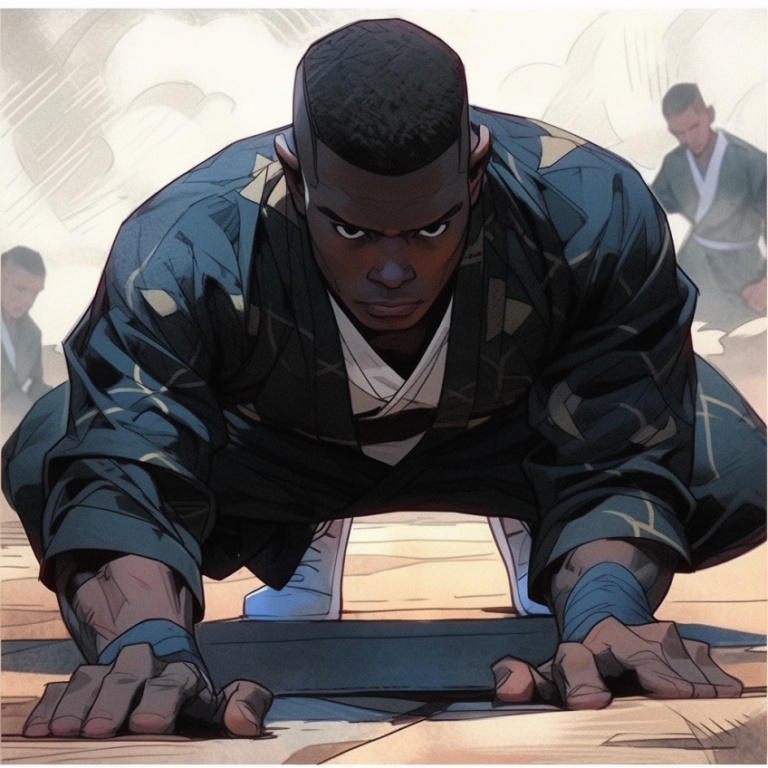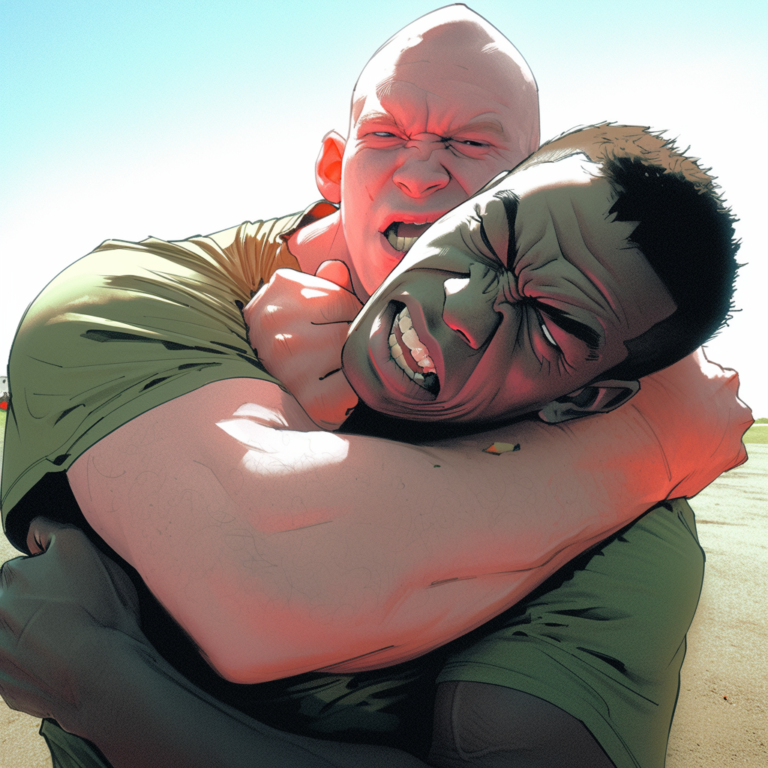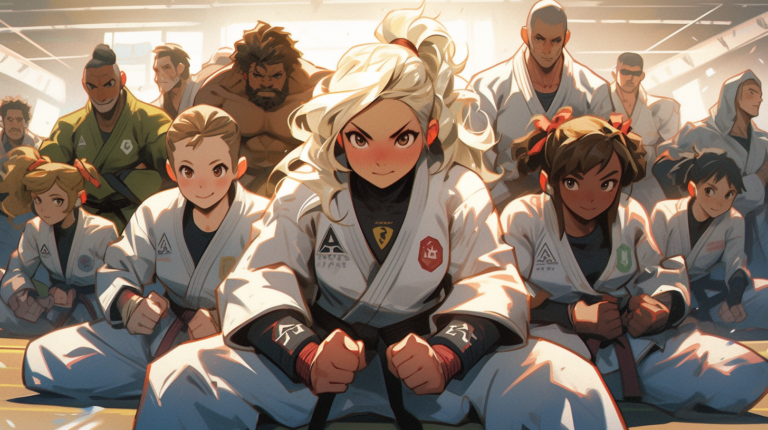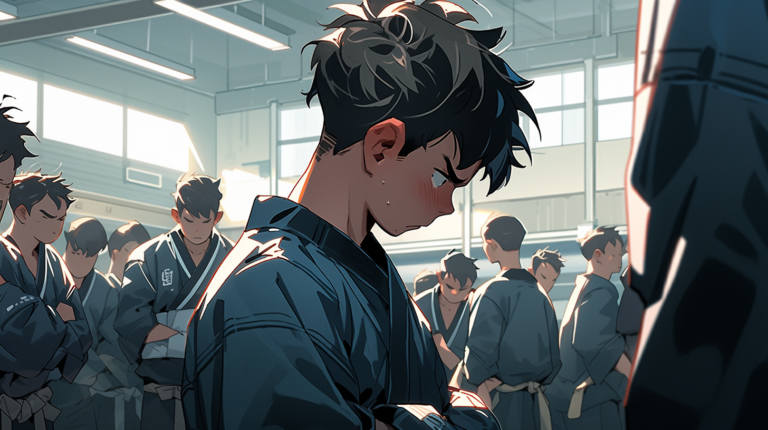how long are jiu jitsu classes?: Mastering the Clock
Brazilian Jiu-Jitsu (BJJ) is a martial art renowned for its focus on grappling and ground fighting. In this overview, we will explore how long are jiu jitsu classes. Additionally, we will dive into the significance of different types of classes that may be offered by a gym.
Key Takeaway:
- BJJ classes vary in duration depending on the academy, ranging from 60-90 minutes on average.
- Beginner classes typically last around 1 hour, but some academies may offer longer classes up to 1.5 hours.
- It is important for beginners to be aware of physical and mental fatigue and limited attention spans that may arise during longer classes.
Duration of beginner Jiu-Jitsu classes
How long are jiu jitsu classes? Beginner Jiu-Jitsu classes offer various durations and formats to accommodate different training needs. They typically last around one hour, with some classes extending up to 1.5 or even 2 hours. These sessions are typically divided into sections including warm-up, technique lessons, and rolling exercises. Beginners may face challenges such as physical and mental fatigue, as well as limited attention span. However, academies may offer alternative schedules and formats, including self-defense focused classes or the 45×3 format, to cater to individual preferences and goals.
Typically 1 hour long, but may run up to 1.5 or even 2 hours
A BJJ class normally lasts 1-1.5 hours. During this time, students learn grappling and ground fighting skills. This class has warm-up exercises, technique instruction, and rolling or sparring. Here’s a breakdown of what happens:
- Warm-up and stretching: To get ready for BJJ training, students jog and do dynamic stretches and mobility drills.
- Technique instruction: The instructor teaches specific BJJ techniques. They may be basic or advanced. The instructor shows students how to do the techniques.
- Positional drilling: In this part, partners practice the techniques in realistic scenarios. One person is in a position like mount or guard, while the other works on the techniques. This helps students learn faster.
- Sparring or rolling: Students apply their techniques against their opponents. This helps them test their skills and develop problem-solving abilities.
Breakdown of class sections: warm-up , technique lesson , rolling
A typical BJJ class has 3 main sections:
- Warm-up: During this section, students do exercises and stretches to prepare their bodies.
- Technique lesson: Instructors explain and demonstrate specific moves and techniques in this section.
- Rolling or sparring: In this section, students use what they’ve learned in live combat against opponents.
It’s possible that there are other components too, such as:
- Positional drilling
- Drills to develop grappling
- Self-defense simulations
- Open mat periods for more practice
Remember, this structure can be different depending on the gym, instructor, curriculum, or class duration.
Alternative class schedules and formats across different academies
Alternative class schedules and formats for Brazilian Jiu-Jitsu (BJJ) allow practitioners to find a training environment that suits them best.
- Morning and lunchtime classes cater to those looking for non-traditional hours.
- Extended evening classes suit those with more flexibility.
- Weekend classes for busy weekday schedules.
- Online classes and private training sessions for personalized instruction.
These alternatives let students select the schedule and format that fits their needs. Plus, open mat sessions, specialized workshops, and seminars give students additional training resources and a well-rounded BJJ education.
So, why take karate when you can take a self-defense focused BJJ class and learn to submit your problems to the ground? With the variety of training options on offer, students can customize their experience to pursue their goals effectively and enjoyably.
Additional class options like self-defense focused classes and the 45×3 format
Self-defense focused classes and the 45×3 format are two extra options available in Brazilian Jiu-Jitsu (BJJ) training. These classes offer specific instructions and unique formats to improve self-defense skills and overall performance.
- Self-defense focused classes: These classes focus on classical self-defense techniques that can be used in real life. Students learn practical techniques for self-defense, such as how to escape from holds, defend against strikes, and immobilize opponents.
- The 45×3 format: This is a training method where participants engage in three rounds of rolling or sparring, each lasting 45 minutes. This long duration helps students build their endurance, mental strength, and technical proficiency through live training.
Apart from typical BJJ class structure, these extra class options give students a chance to specialize in different aspects of their training. Self-defense focused classes make sure practitioners have the skills to protect themselves outside the gym. The 45×3 format tests students by making them engage in longer sparring sessions.
To make the best of these extra class options, students should:
- Attend self-defense focused classes often: By dedicating time to self-defense techniques, students can gain a wide set of skills beyond competitive BJJ.
- Commit fully during the 45×3 format: Make the most of the extended duration of rolling and use it to refine skills, build stamina, and sharpen mental focus.
- Apply self-defense techniques during rolling sessions: Incorporate self-defense concepts into regular sparring sessions and practice them in real-time scenarios.
By taking part in self-defense focused classes and the 45×3 format, BJJ practitioners can master different aspects of the martial art. These additional class options give them invaluable training opportunities for both self-defense and better overall performance.
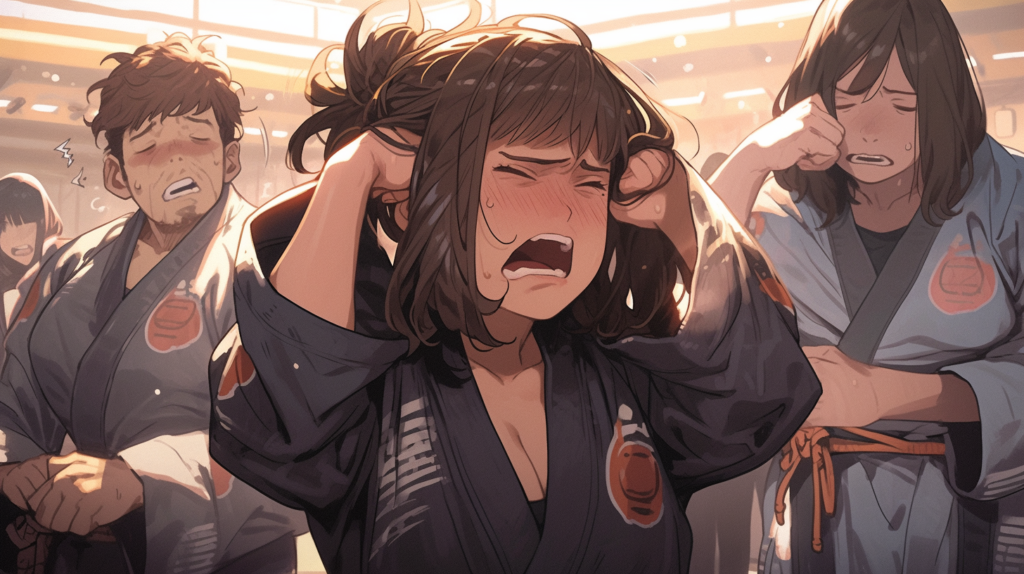
how long are jiu jitsu classes in general
BJJ classes typically last between 60-90 minutes, although this duration may vary depending on factors such as the gym, instructor, and curriculum. Skill level and specific focus can also impact the length of a class. Different types of classes, such as kids’ BJJ or beginner-specific classes, may have their own timeframes. A typical BJJ class consists of warm-up exercises, technical instruction or drilling, and sparring. Incorporating different types of sparring and classes is essential for a well-rounded training experience.
Average duration between 60-90 minutes, but can vary depending on gym, instructor, and curriculum
how long are jiu jitsu classes is usually between 60-90 minutes. Though this can differ depending on the gym, teacher, and syllabus.
Exercises like warm-up movements, technique instruction or drilling, and sparring or rolling activities take place during these classes. The length of a BJJ class may also be affected by matters such as the skill level of the participants and the specific focus of the class.
For example, kids’ BJJ classes or beginner-specific classes could have shorter durations to fit the physical and mental abilities of those taking part. Additionally, distinct gyms and instructors could have their own unique timelines and formats for BJJ classes.
In a regular BJJ class, people can expect a structured set-up that includes warm-up exercises to ready the body for training. Afterwards, there’s usually a period of technical instruction or drilling where pupils learn and practice certain techniques related to grappling and ground fighting. This part of the class enables individuals to progress their abilities in a controlled environment before moving on to live sparring or rolling sessions. These sessions give students the chance to use their freshly learned techniques against resisting opponents.
It’s essential to remember that while 60-90 minutes is the regular duration for BJJ classes, some academies may offer classes that don’t match this timeframe depending on their particular teaching philosophy and student needs. For instance, some academies may opt to offer shorter or longer classes based on elements like the attention span of novices or advanced practitioners who require more time for in-depth training. Consequently, it’s advised that those interested in joining BJJ classes ask about class durations at their preferred gym or academy.
By recognizing the disparate durations of Brazilian Jiu-Jitsu (BJJ) classes offered across different gyms, individuals can make informed decisions on how long are jiu jitsu classes are based on the type of class suits their schedule and individual objectives. Whether it’s a one-hour beginner class or a 90-minute mixed-level class, the duration of BJJ classes will ultimately rely on factors like the gym, instructor, and syllabus in place. No matter the length of the class, BJJ practitioners can look forward to engaging in warm-up exercises, learning and exercising techniques, and taking part in live sparring or rolling sessions to improve their skills in this dynamic martial art.
Skill level and specific focus affect class duration
Skill level and focus can impact the duration of a Brazilian Jiu-Jitsu class.
- Beginners may need more time for instruction and drilling. Advanced practitioners may need longer sparring sessions.
- Classes focusing on self-defense techniques may have shorter durations, as they cover fewer techniques than classes focused on competition training.
- Classes for age groups or demographics (e.g. kids’ classes) may have adjusted times based on needs and attention spans.
- Gyms and instructors with varying curriculums may also influence the duration.
Individual variations determine how long are jiu jitsu classes these factors can also affect the length of a BJJ class.
Communication between instructors and students is essential for tailored training experiences. This way, participants receive optimal experiences, regardless of skill level or focus.
Kids’ BJJ classes and beginner-specific BJJ classes
how long are jiu jitsu classes for kids? Kids’ BJJ classes provide an opportunity for kids to learn the basics of Brazilian Jiu-Jitsu in a fun and supportive environment. Age-appropriate exercises, skill-building drills, and interactive games help improve coordination, balance, and self-defense skills.
Meanwhile, beginner-specific BJJ classes are tailored for adults who may be starting their journey later in life or have had limited exposure to physical activities. They focus on building a strong foundation with proper techniques from the start.
Unique teaching methodologies are used to cater to adults with limited attention spans or physical stamina. Experienced instructors provide corrections and guidance during training sessions to ensure proper technique execution, while boosting confidence and motivation.
Overall, these classes create a safe and encouraging atmosphere for children and adults alike to learn the fundamentals of this martial art.
Structure of a BJJ class: warm-up, technical instruction or drilling, sparring or rolling
A BJJ class is typically structured with:
- A warm-up, which involves exercises and stretching to prepare the body for the intense training. This helps to loosen up muscles, increase flexibility, and reduce the risk of injury.
- Technical instruction or drilling, which focuses on honing fundamental skills. Students practice different positions and techniques.
- Sparring or rolling sessions, where students apply their learned techniques in live sparring with partners of varying skill levels. This helps develop timing, reflexes, strategy, and proficiency in BJJ.
It is worth noting that different academies or instructors may have slight variations in the class structure. However, the warm-up exercises, technical instruction or drilling, as well as sparring or rolling components remain consistent.
Self-defense classes may allocate more time to positional drilling and self-defense scenarios. A well-rounded BJJ program could make Chuck Norris think twice!
Importance of incorporating different types of sparring and classes for well-rounded training
Crucial Incorporation of Sparring & Classes to Achieve Well-Rounded BJJ Training. Different types of sparring and classes must be incorporated for a well-rounded training experience in Brazilian Jiu-Jitsu (BJJ). This encourages the growth and proficiency of BJJ practitioners, by exposing them to various sparring partners and class formats.
In BJJ, incorporating different types of sparring such as positional drilling, live positional drilling, and live rolls helps improve timing, reflexes, decision-making abilities and overall grappling prowess.
Attending different class formats can further enhance training. Just notes that going to different classes may change how long are jiu jitsu classes are. Mixed-level classes let you test yourself against more skilled opponents, and help others improve. Competition-focused classes prepare for BJJ tournaments. Women’s classes create a supportive space for women. Self-defense classes offer training in classical self-defense techniques. No-gi classes offer a faster-paced alternative. Children’s classes have shorter durations and incorporate games.
How long are jiu jitsu classes with Open mat sessions? Most gyms do a 2 hour time period for open mat. Open mat training sessions let practitioners structure their own training. This provides an opportunity to experiment with techniques, or work on specific areas without any structured instruction. Open mat periods promote autonomy in one’s training.
To ensure a comprehensive and effective training experience, different types of sparring and classes must be incorporated into regular training. This helps develop a diverse skill set, adaptability, and understanding of real-world application. Failing to include these aspects may limit growth in technique and overall development as a BJJ practitioner. This holistic approach is key to reaching one’s full potential in Brazilian Jiu-Jitsu.
FAQs about How Long Are Jiu Jitsu Classes
how long are jiu jitsu classes?
The duration of BJJ classes can vary depending on several factors such as the gym, instructor, and curriculum. On average, a BJJ class lasts between 60 and 120 minutes, with the most common duration being around 90 minutes.
What is the structure of a typical BJJ class?
A typical BJJ class consists of a warm-up session, technical instruction or drilling, and sparring or rolling. The warm-up usually takes 15-30 minutes, followed by 30-60 minutes of technique instruction or drilling. The class then concludes with 15-30 minutes of sparring or rolling.
Are there separate classes for beginners in BJJ?
Yes, many BJJ gyms offer separate classes specifically tailored for beginners. These classes focus on teaching the basics and fundamental techniques of BJJ, providing a less intimidating environment for newcomers to the sport.
What are some common warm-up examples in BJJ classes?
The warm-up portion of a BJJ class often includes exercises such as jogging, basic gymnastic movements, animal movements (bear crawl, crab walk), shoulder rolls, and other BJJ-specific movements. The purpose is to warm up the body, increase flexibility, and prevent injuries.
Are there advanced classes available in BJJ gyms?
Yes, many BJJ gyms offer advanced classes for more experienced practitioners. These classes go beyond the basics and focus on advanced techniques, drills, and rolling styles suited for higher belt levels. They can also extend how long are jiu jitsu classes are making them up to 2 hours long.
Do BJJ classes have a cool-down or warm-down session?
While not all BJJ classes include a specific warm-down session, some may offer a brief cool-down period. This allows participants to stretch their muscles and gradually bring down their heart rate after the physical intensity of the class
Conclusion
Summary of information on BJJ how long are jiu jitsu classes:
BJJ classes can be different in length and format. Usually they range from 1 hour to 1 and a half. They usually start with a warm-up, then the instructor focuses on teaching techniques and drills. Finally, there’s ‘live rolling’ or sparring to practice.
It’s worth noting that some academies offer different class lengths. Also, gi or no-gi classes are available, as well as classes for certain ages and skill levels.
So, BJJ classes have lots of flexibility. How long are jiu jitsu classes are up to you. You can pick the length and format that best suits you. There are even options to cater to individual goals. Leveled classes also give an optimum learning experience. Students get appropriate guidance based on their current abilities. Beginners can focus on developing fundamental skills, such as form and basic techniques. Advanced students can refine existing techniques, expand repertoire, and improve specific areas.
Some Facts About How Long Jiu Jitsu Classes Are:
- ✅ Jiu Jitsu classes typically last between 60-120 minutes, with the average class lasting 90 minutes. (Source: Fluent BJJ)
- ✅ The structure of a Jiu Jitsu class usually includes a warm-up (15-30 minutes), technical instruction or drilling (30-60 minutes), and sparring or rolling (15-30 minutes). (Source: Fluent BJJ)
- ✅ Beginner Jiu Jitsu classes are typically 1 hour long, but some can run up to 1.5 hours. (Source: Project BJJ)
- ✅ There are variations in class schedules and formats across different Jiu Jitsu academies. (Source: BJJ Accessories)
- ✅ The duration of Jiu Jitsu classes can depend on factors such as the gym, instructor, skill level of participants, and specific focus of the class (e.g., self-defense or competition). (Source: Martial Arts Insider)
